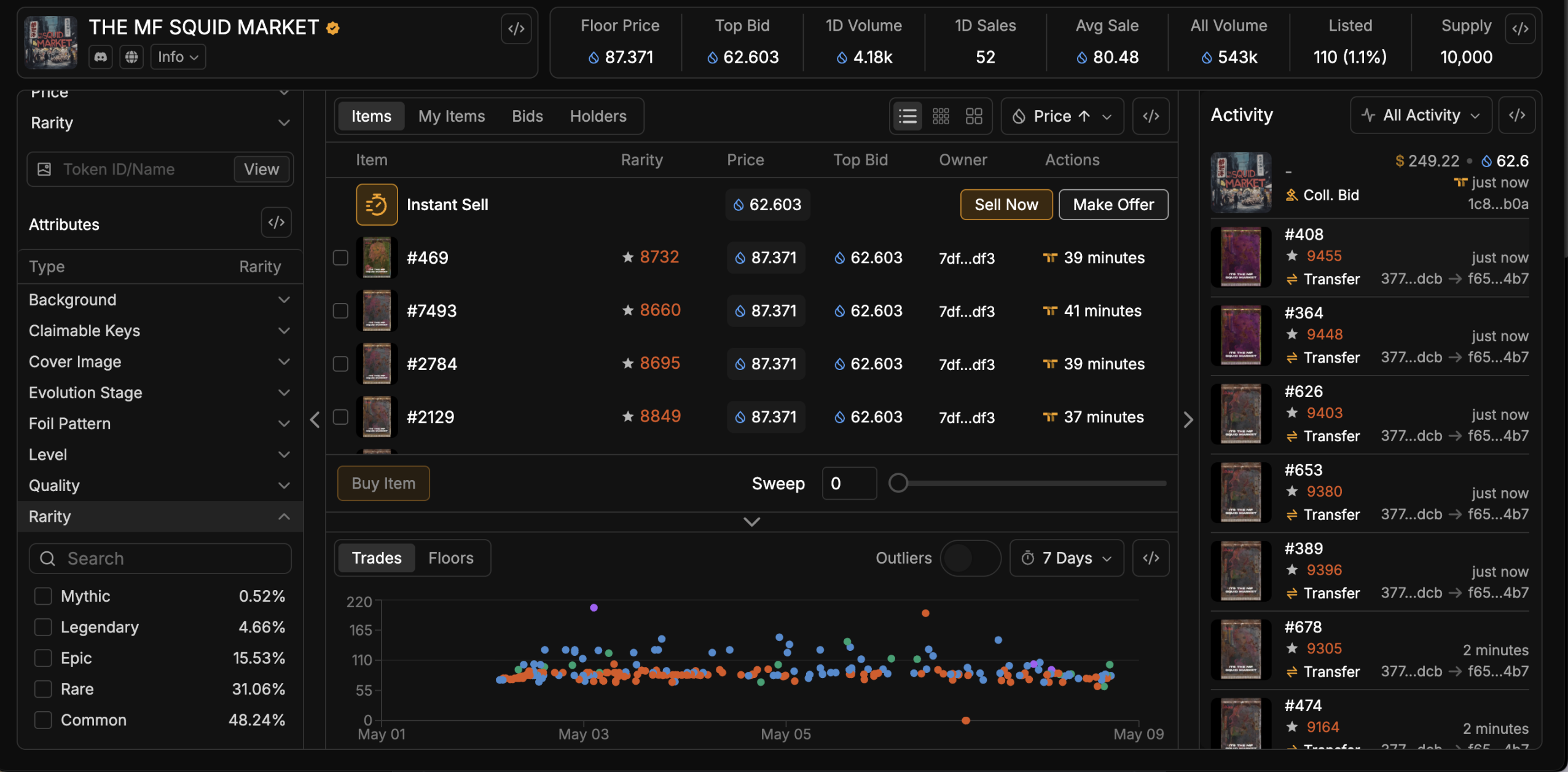By Alex Liu, Foresight News
Financing information and pre-market prices
On April 28, 2025, IKA announced that it had received strategic investment from the Sui Foundation, bringing the project's cumulative financing to over $21 million. Previously, IKA had raised over 1.4 million SUI tokens by issuing THE MF SQUID MARKET series NFTs on Sui, and received support from DCG, Big Brain Holdings, Blockchange, Node Capital, Amplify Partners, Liquid2 Ventures, FalconX and other institutions.
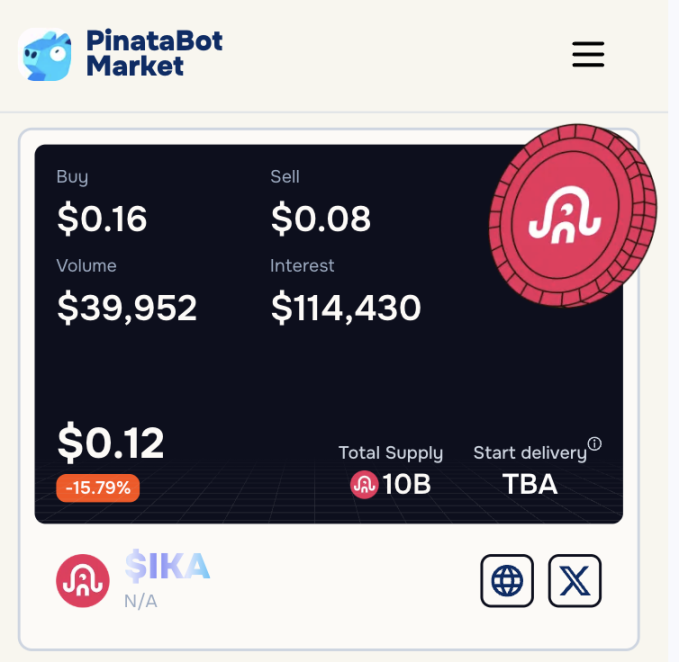
So far, the highest project financing valuation is $600 million. On Sui's pre-market token OTC trading market PinataBot Market, the full circulation market value of the token IKA has reached $1.2 billion (low trading volume).
What kind of project is IKA and why did it receive such financing and valuation?
Project Background and Introduction
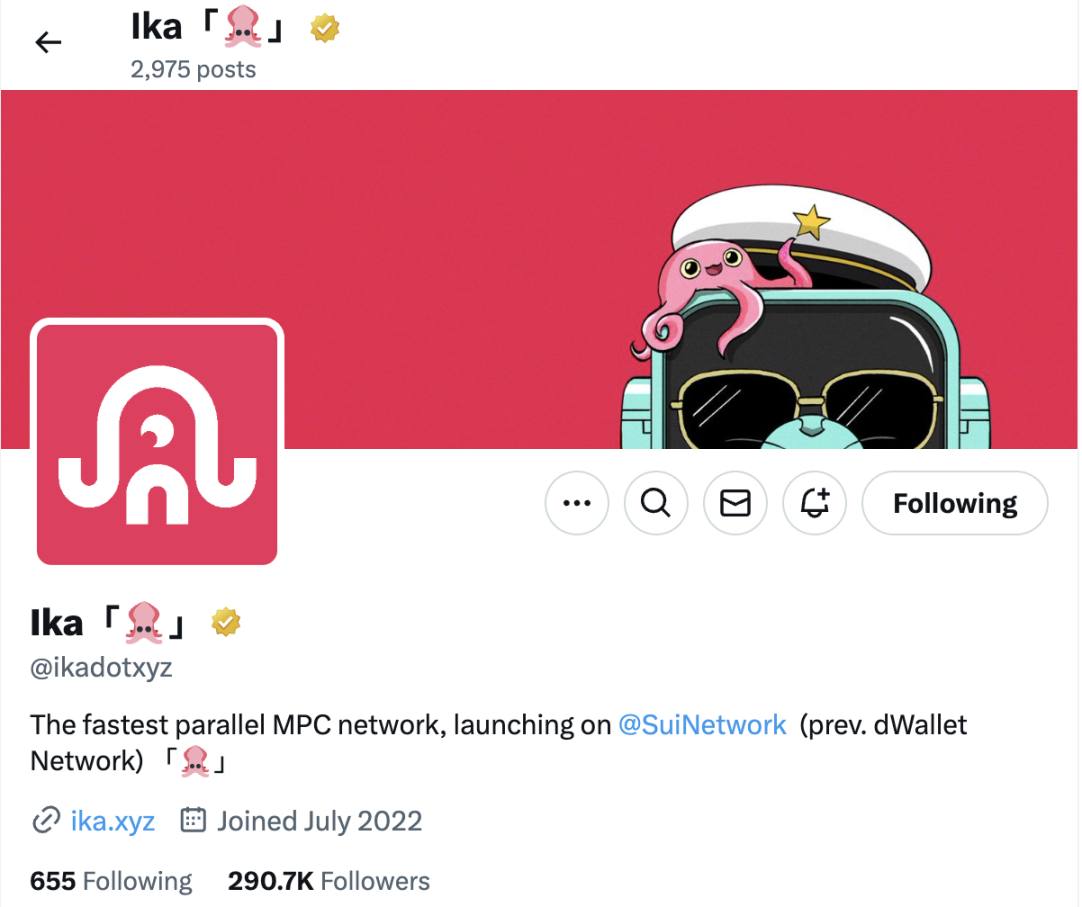
IKA, formerly known as “dWallet Network”, will launch a parallel MPC (multi-party computing) network based on Sui. Under the slogan of “We make all chains Sui chains”, IKA still solves the problem of cross-chain interoperability of assets.
Conventional cross-chain asset transfers usually rely on bridge protocols and packaged assets (such as packaging BTC as ERC-20 tokens for use on Ethereum, or introducing USDC into Solana). However, this approach has fundamental flaws:
- Non-native asset risk: users only hold wrapped tokens, not real BTC or ETH;
- Bridge security risks: If the bridge protocol is attacked (such as the theft of $624 million from the Ronin bridge in 2022), all user assets may be lost;
- De-anchoring crisis: Wrapped tokens may lose their price anchor due to liquidity issues.
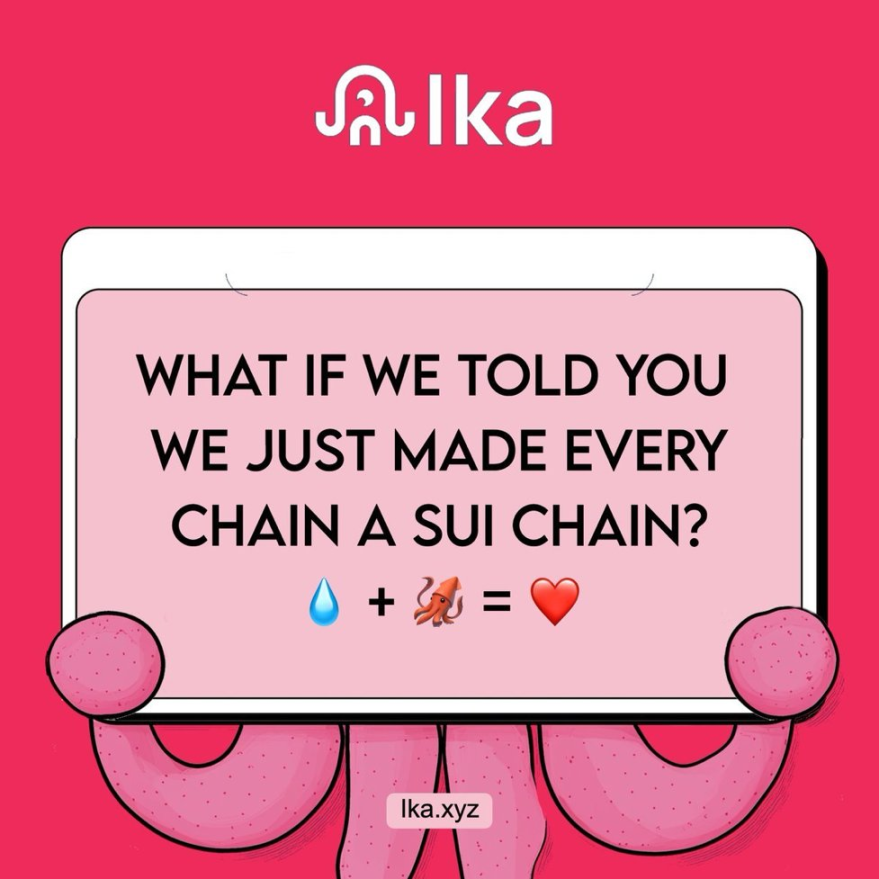
Applications built using IKA as the underlying protocol can avoid the inconvenience of these cross-chain assets. Taking the use case of BTC cross-chain lending as an example, the operation process is as follows:
- Create a dWallet (described in detail later) and bind a BTC address;
- Initiate a loan request through a smart contract;
- BTC is locked on the Bitcoin chain (not wrapped);
- Receive loan funds on the Ethereum chain in real time.
This enables:
Asset lock: BTC cannot be moved before repayment;
Automatic liquidation: If the BTC price plummets or is overdue, the collateral will be automatically liquidated;
Zero Trust Guarantee: The entire process is guaranteed by the 2PC-MPC protocol, and no one can misappropriate assets.
IKA is the underlying interoperability protocol for B2B. The above use case is just one of the applications that can be built based on it. In fact, more than ten projects (mostly from the Sui ecosystem or have established a cooperative relationship with Sui) have been connected to IKA, covering four core scenarios:
DeFi Interoperability
Protocols such as Full Sail use IKA to inject BTC/ETH liquidity into the Sui on-chain DEX in real time, and users can directly use native BTC to participate in pledge lending;
Institutional-grade custody
Aeon provides institutional investors with a multi-signature asset management solution based on IKA. Private key fragments are distributed across hundreds of nodes around the world, balancing the issue of "self-custody vs. compliance";
Chain abstract experience
Covault uses IKA+zkLogin to create a "seamless cross-chain" wallet, allowing users to directly operate Solana NFT and Ethereum DeFi on the Sui chain;
Financialization of Bitcoin
The Native protocol develops the BTC options market based on IKA, realizing the programmatic return strategy of native Bitcoin for the first time.
Also worth noting is the integration scenario of AI and Web3: Teams such as Atoma use IKA to set up transaction firewalls for AI agents to ensure that automated investment decisions cannot transfer assets without authorization, providing a security foundation for the AI+DeFi market.
So how does IKA achieve cross-chain asset interoperability and attract these applications to access it?
Technical principle
IKA's core technologies can be summarized into two modules - dWallet (decentralized wallet) and 2PC-MPC (two-party computing - multi-party secure computing) protocol, allowing users to directly use native assets such as BTC and ETH to participate in the multi-chain ecosystem without relying on packaged tokens.
dWallet: A cross-chain all-in-one wallet
dWallets are like the "master key" of the cross-chain world: users can manage multi-chain assets through one interface. The private key of each dWallet is split into multiple "key shares" and stored in different nodes in the network. When a user initiates a cross-chain transaction, the network node and the user's respective key shares jointly participate in the signature operation, but never reconstruct the complete private key. This means that there is no risk of single-point private key leakage under any circumstances.
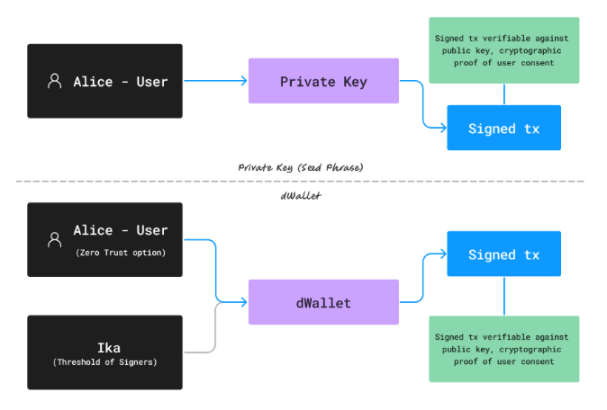
dWallet is programmable and transferable. Developers can set strategies such as multi-signature, spending limit, conditional payment, etc. DAO can also achieve seamless transfer of governance wallets. Combined with Sui's zkLogin function, it allows users to log in to any chain with Google/Apple accounts, completely eliminating the burden of multi-wallet management.
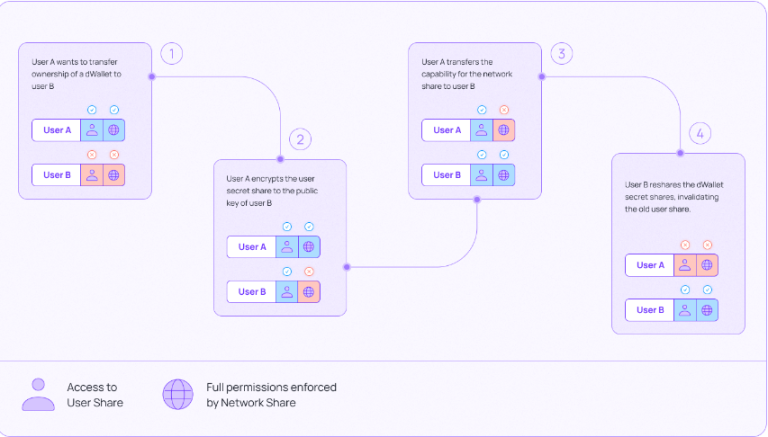
2PC-MPC Protocol: Sub-second Parallel Signatures
IKA adopts an original 2PC-MPC solution: first, the user and the network each generate a "share of the encryption key" (Two-Party Computation), and then hundreds to thousands of nodes execute the MPC signing process in parallel (Multi-Party Computation). With Sui's Mysticeti consensus, the signing nodes can be expanded horizontally to thousands, and the throughput is 10,000 times that of the existing MPC network; the signature delay is stable at the sub-second level, while maintaining a very high degree of decentralization and anti-censorship capabilities.
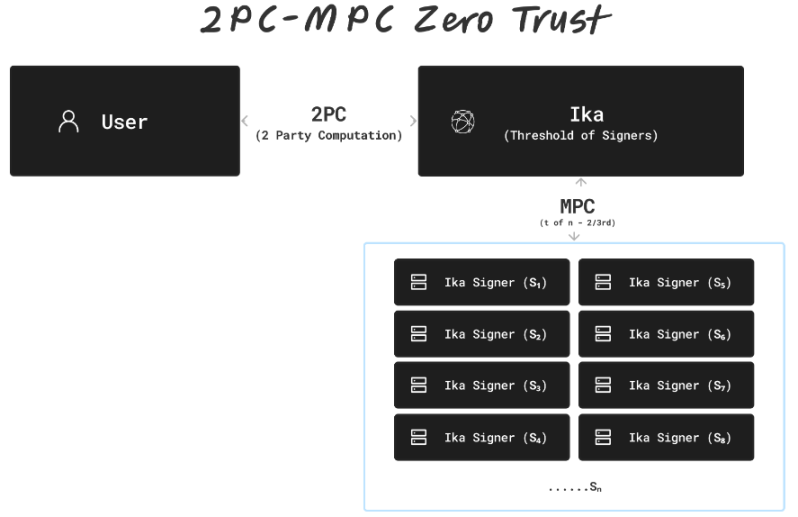
Simply put: the 2PC-MPC protocol breaks the "security-efficiency" paradox of traditional MPC.
Token Economics
IKA announced its initial token economics on May 8. The native token IKA (total issuance of 10 billion) is the core carrier of the network's economic operation, and its main functions include:
- Payment function: Users use IKA to pay network service fees, including fees for creating dWallet, requesting signatures, redistributing key shares, etc.
- Security incentives: Through the Delegated Proof of Stake (DPoS) mechanism, nodes compete for signature and consensus verification rights, and obtain corresponding benefits by staking IKA; improper or malicious behavior will be fined to ensure network security.
- Governance weight: IKA holders can participate in network governance proposal voting to decide matters such as protocol parameters, economic model adjustments, and community fund use to achieve decentralized autonomy.
Token Allocation
IKA promises to allocate more than 50% of the tokens to the community. When the mainnet is launched, 6% (600 million) of the tokens will be used for the first round of community airdrops and incentives.
Officials said that other token distribution details will be announced closer to TGE.
Participate in Airdrop
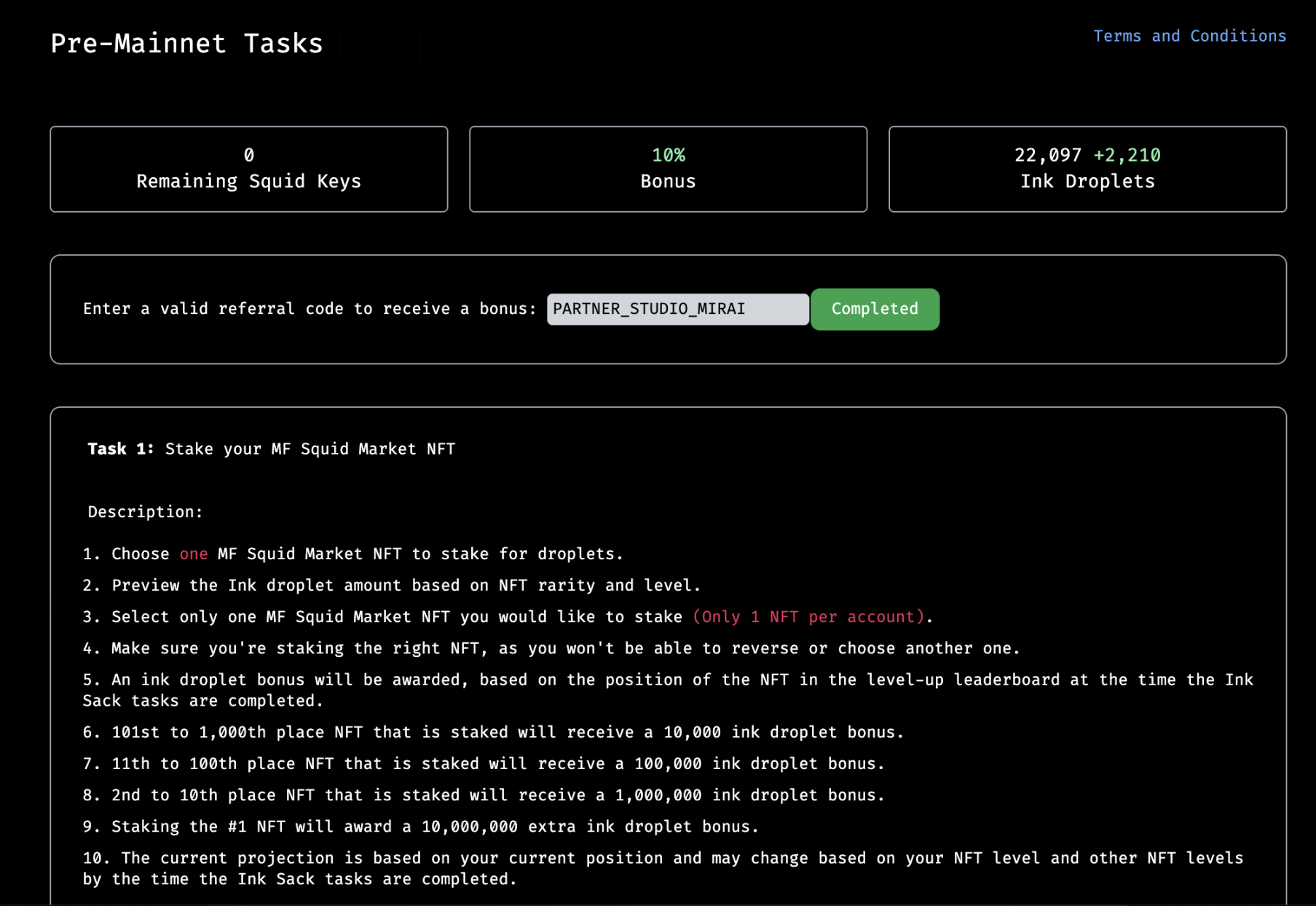
IKA currently has Pre-Mainnet tasks that can be completed and droplets can be obtained, which are likely related to the subsequent token airdrop.
Many tasks require staking the THE MF SQUID MARKET series NFTs issued on Sui (currently the floor price is 87 SUI) in order to participate.
Note that the rarity and level of NFTs determine the number of droplets you get, and the official page has detailed information. Users who do not hold NFTs can participate in activities such as staking SUI as iSUI and locking it, getting droplets every day (staking NFTs is a one-time acquisition and will not increase daily), generating dWallet (it is shown that 5 SUI is required, and the actual deduction is only the gas fee), registering Sui, EVM, Bitcoin chain address (only consumes gas), etc.
